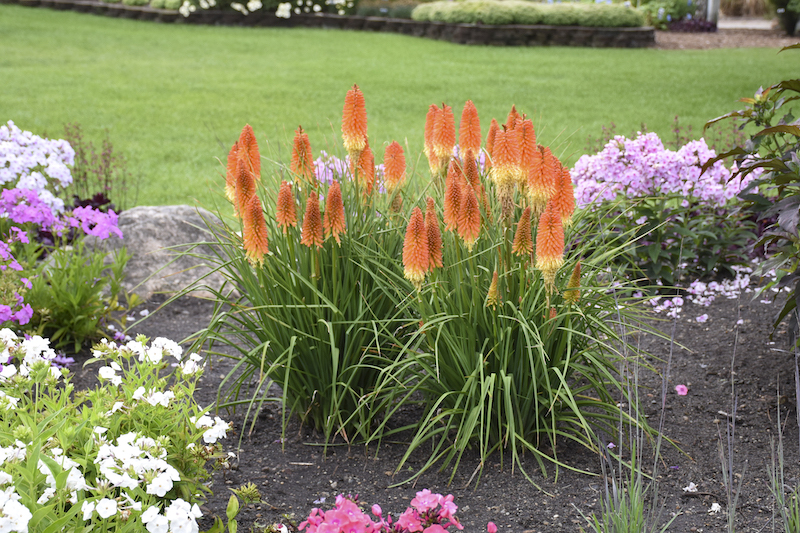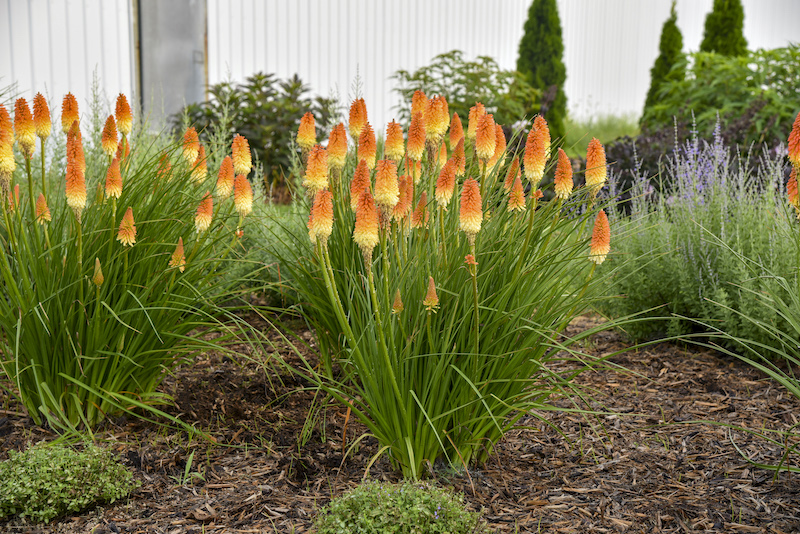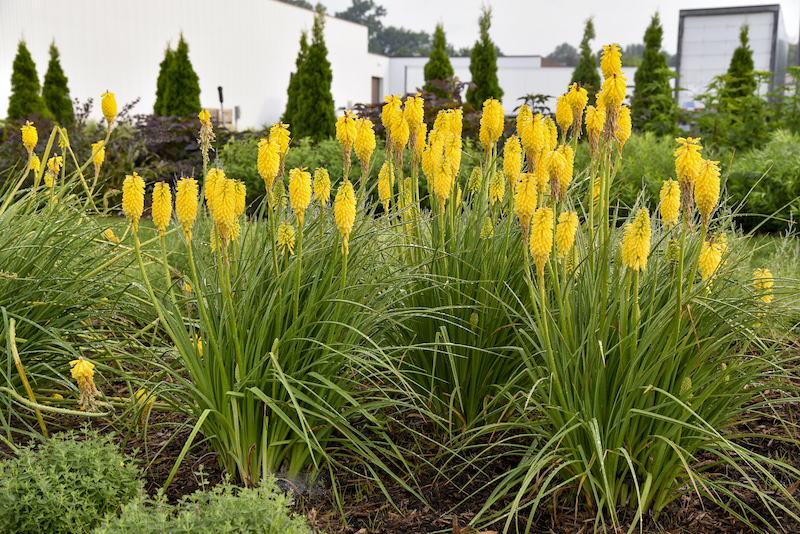Red Hot Poker (Kniphofia spp.) is a drought-tolerant, low-maintenance perennial grown for its shocking red to yellow flower spikes. The trick to growing Red Hot Poker successfully lies in picking a spot with plenty of sunlight, providing well-draining soil, and regular watering through its first year in your garden.

What You Need To Plant Red Hot Poker
- Shovel
- Compost or manure
- Garden spade
- Good location with at least 6+ hours of direct sunlight
- Water source
- Mulch
Where to Plant Red Hot Poker
Red Hot Poker is a sun-loving perennial that will do best in a spot where it can get at least 6 hours of direct sunlight, though it can tolerate a bit of afternoon shade in hotter climates. For best results, plant Red Hot Poker in well-draining soil and add 2-3 inches of high quality mulch around the base of the plant to retain moisture, improve its drought-tolerance, and protect it from temperature extremes. Plant Red Hot Poker no deeper than the soil level in the container - burying the crown deeper than a few inches can be detrimental to its overall health. Poor drainage and crown damage are the leading causes of health issues in Red Hot Poker.

Red Hot Poker Spacing
Red Hot Poker is a rhizomatous plant, spreading in clumps from rhizomes beneath the soil. For this reason, you can plant individual plants 2-3 feet apart, giving them plenty of space to grow without encroaching on others. Like an ornamental grass or daylily, Red Hot Poker will grow in thick clumps, supporting its blade-like leaves and flower spikes without additional support. Should these fast-growing plants begin to spread too wide, they can be easily divided in the early spring.

Steps To Plant Red Hot Poker
When planting Red Hot Poker, you will want to ensure that you are choosing a spot that allows for growth. Red Hot Poker spreads in clumps and can become invasive if planted next to less vigorous growers. Once a sunny spot is chosen, dig a hole that is at least twice as wide and the same depth as the pot. Because Red Hot Poker does best in well-draining soil, we recommend amending the soil you will be back filling with, especially if the soil in your area is clay-based. Amending soil can be as simple as mixing in high-quality garden soil or compost.
Once the hole is ready, gently remove Red Hot Poker from its pot by pressing into the sides of the grow pot and tugging on the whole crown of the plant. Place the root ball into the hole, making sure it is not too deep. Add soil back into the hole, packing it down firmly without compacting the soil.
After your hole is filled, we recommend adding 2-3 inches of mulch around the base of the plant. Mulch is beneficial as a weed suppressant, to keep moisture around the roots in the hottest parts of the year, and protecting the root ball from the cold in the winter. Once Red Hot Poker is planted, water deeply.
Step 1 - Pick a spot.
Step 2 - Dig a hole.
Step 3 - Amend the soil removed.
Step 4 - Place Red Hot Poker root ball in the hole, level with the top of the hole.
Step 5 - Fill in the hole and pack the sides down slightly.
Step 6 - Add mulch around the plant and water deeply.
When to Plant Red Hot Poker
The best time of year to plant perennials is in the spring, past the danger of frost, or in early fall when daytime temperatures are less extreme. Planting in the early morning or evening will reduce the amount of stress due to the sun and heat when planting perennials. It is a good idea to water perennials deeply immediately after planting as well. While perennials can be planted in the summer, they are more likely to become drought- or heat-stressed in the process, lowering their overall health and ability to grow quickly. If planting in the summer is a must, be sure to do so in the early morning or evening and plant Red Hot Poker into already-damp soil and water deeply.
Transplanting Red Hot Poker
While Red Hot Poker generally does not like to be divided or moved, you can do so in the early spring to reduce their size. Because they grow via rhizomes beneath the soil, you can take a sharp spade and cut into the root system right in the soil - there is no need to remove the entire plant from the ground to divide it.
After cutting into the roots all around the section you are dividing, firmly leverage the section out of the ground, digging up as much root ball as possible. To reduce the amount of stress on this new plant, pick a spot with similar lighting to its original home and amend the soil so that it is well-draining. Water immediately after transplanting.
 |
Author Lynn Gusman - Published 9-21-2022 |
